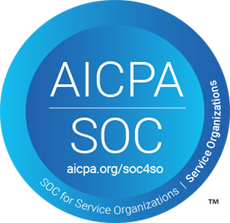We are big believers in examining the current lifecycle and complexities of HIE implementation in healthcare to understand how to leverage what is in place and working well, and where opportunities exist to change the way that healthcare connectivity takes place. Health Information Exchanges (HIEs) can absolutely deliver value to a care community or healthcare system, but often a few key challenges face HIE efforts in earnest, and most of them have little to do with technical concerns.
Let’s cover a few common challenges with implementing HIEs, and discuss a radical, intrepid way forward for healthcare communication.
Interoperability Efforts Must be Easily Accessible to Busy Point-of-Care End Users
While data aggregation via connectivity is absolutely valuable, which is often “the lead” when it comes to interoperability, the ability for that information to benefit care outcomes is foregone if the data is not actionable by those at the point of care. For interoperability to succeed in changing patient lives, the data must be timely and easily accessible to busy physicians and their staff.
For example, if a continuity of care record is accessible via a portal, that’s not necessarily a deal-breaker. True workload integration into EHRs is even better, but even that can be clunky. The method isn’t as important as the means: if it takes a dozen clicks to get to the data, it’s going to hinder rather than help. Doctors and nurses serving on the front lines cannot be expected to chase down information, so data that is interoperable and yet out of reach becomes no more likely to inform real-time care delivery than a paper lab report in a pile of faxed documents.
HIEs aren’t Cheap
Despite incredible ROI promised at the onset of attempts to establish HIEs, the reality is that the volume of integrations and collaboration required across the geography served can be incredibly costly.. Frank reality is that many use cases, provider types, and care delivery settings are simply “priced out” of participation in formal HIEs without subsidization or incentives. This creates a barrier to enabling all providers across the care spectrum to access accurate medical records for shared patients, the acknowledgment of which should inspire all of us to consider solutions that don’t necessitate bolstered budgets and hefty implementation timelines.
Traditional Interoperability has too Many Rules
We’ve worked with many clients who have found traditional interoperability attempts futile given the narrow path through which data must flow. Standards are helpful, but when homegrown or peripheral solutions (think EMS use cases, for example) don’t meet the requisite integration standards, progress stalls (if not breaks down all together). These “hard-to-reach” patient records are a pivotal influence to truly impacting patient outcomes, so in a manner of speaking, the variability of standards across interoperability leave important gaps in the Patient’s care journey.
But this doesn’t mean we all need to ditch standards! No, instead we need to break through the barriers for disparate exchange standards and unlock Healthcare Communication! And we have some ideas on how to do just that…
What if there was a different way to skin this cat (apologies to you feline lovers)? What if there was a suite of enabling infrastructure, flexible enough to accommodate a variety of standards and varying in price points and agile enough to minimize the complexity to implement? Could we prioritize connectivity now, simply, versus chipping away at yet another regional, year-long, phase-happy implementation plan, only to have to repeat the cycle with every willing participant care organization.?
Thinking Differently About Interoperability for HIEs
There is no question that some health systems have beautifully executed robust HIEs, but it’s also a reality that many regional efforts struggle because they’re comparing apples to oranges, overlooking that their stakeholders just don’t have access to the same resources as others, and some are dealing with the inconvenient reality that desirability doesn’t equate to feasibility.
So, what’s the Solution to Interoperability Challenges?
Glad you asked! Leveraging a simple connectivity platform that is flexible and “plug and play” is a great way to create a level playing field that doesn’t simply favor the most popular vendors and larger health systems. Providers of all sizes and shapes can participate in cultivating comprehensive care records for patients, and data can be nimbly delivered to the point-of-care in more ways than one…serving providers inside the clinics and out!
Reach out to learn more about getting your community Kno2 Connected.







